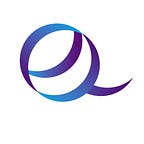What is Distributed Ledger Technology (DLT)?
A game-changer holding its own
There was a period in history when the ancient world discovered humankind’s limited capacity to remember things. They deemed the need to document important events that transpired lest future generations forget where they were coming from.
With that in history, and so was with the economy. Ancient traders, buyers, and sellers were a detailed lot in terms of dealing, transacting, authenticating, dating, and sealing. Such was the early Mesopotamians who recorded quantities on clay tablets containing pictographic representations of items including the division of labor. This earliest Excel- like ledgering was called Proto-cuneiform and Cuneiform. And that was over 5,000 years
ago!
The accounting ledger’s evolvement came when 700 years ago, money lenders and merchants in northern Italy introduced the double-entry system where each item is entered twice in the ledger, one as credit, and one as debit. The simple equation of capital is equal to assets minus liabilities grew so much in popularity as to give birth to capitalism, investing, and the eventual pursuit of profit.
When governments began establishing central banks in 1931, ledger entries transformed from measured tangibles to money, a representation of economic value. Central banks were mandated to create reliable payment systems and manage economies and financial systems as a whole. It conducted monetary policies, influence circulating money, and control interest rates and the rate of inflation. Central banks are out to stimulate the economy and preserve stability.
The start of the golden age of the distributed ledger was largely part due to the invention of the Internet. Digital technology allowed the possibility to take away control of the ledger from a central authority, a government, an entity, or from an individual. Being decentralized, this principle was successfully applied when Bitcoin was introduced in 2009 using the core of the distributed ledger technology called the Blockchain. Now, the distributed ledger technology (DLT) digitally systematizes the record of transactions by simultaneously providing all participating nodes or computers a copy of the ledger, hence, distributed. It instantaneously eliminated a single point of failure which traditional centralized databases rely on that are prone to manipulation, fraud, graft, and corruption.
With DLT, stored data are secured by cryptographic signatures and keys belonging to authorized users. Once data is stored, it becomes public and immutable.
Distributed ledger technology is categorized according to the following:
- Private-Permissioned — This DLT is not decentralized as applications and nodes must be invited first before being allowed to join the network. Thing is, anyone can be removed anytime.
- Private-Permissionless — This DLT proposes that participating nodes can pseudonymously join and contribute in exchange for the network’s cryptocurrency, but may be removed anytime.
- Public- Permissioned — This DLT allows applications to be deployed or may be removed unconditionally. Nodes and applications need to be invited to join the network.
- Public-Permissionless — This DLT represents the most decentralized of all as nodes and applications may be deployed or removed. Nodes may freely join and contribute anonymously in exchange for the network’s native cryptocurrency.
Conclusion
Distributed ledger technology has the capability of disrupting a very major part of the world’s traditional and obsolete financial and economic systems to the point of accelerating the delivery of goods and services and upgrading the lives of the masses. DLT will make quick work of any transaction without reliance on a third party. The stored data will be resistant to tampering as it is immutable. Compared to centrally controlled ledgers, DLTs are more reliable, accessible, and cost-efficient transaction platforms leaving legacy mechanisms things of the past.
eQapital is relevant now more than ever in catering to the currently evolving needs of the digital investor. Financial services from Trust, Custody, Exchange, Transfer, to Asset Management needs are strategized on blockchain infrastructure to empower you to control your funds, whether fiat or crypto. Security is in place with AML/KYC/CFT procedures. Our friendly eQapital Team is always ready to assist you 24/7. Contact us now and let us be partners towards your progressive financial health goals.
